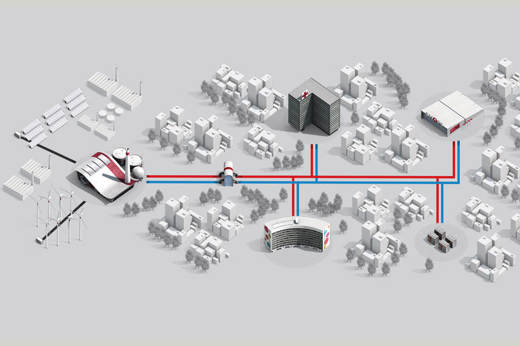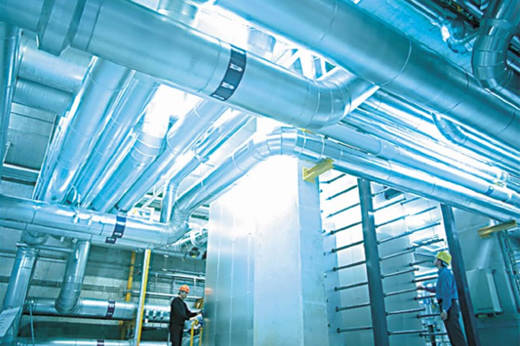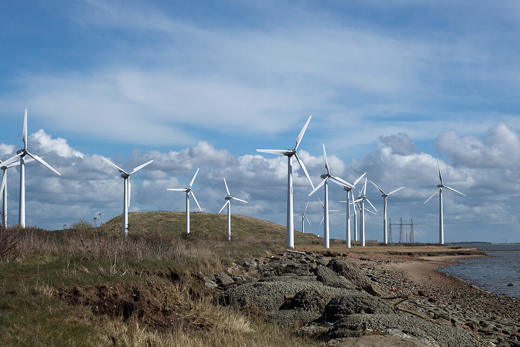
How does district heating work?
Through a district heating network, the heat-producing plant pumps heated supply water to consumers where it is used as room-/floor-heating and to generate domestic hot water. The domestic hot water gets heated in a heat exchanger in which the heated supply water transfers its heat to the water coming out of the taps.
For room heating, the supply water might be used directly. Alternatively, a heat exchanger could also transfer the heat to an internal circulation. The supply water – which is now cold because the heat has been transferred to domestic hot water and room heating – then returns to the district heating plant. The district heating supply water circulates endlessly in a closed pipeline.
Some district heating systems use steam as a medium for heat distribution instead of water. This is to achieve higher supply temperatures, which are often necessary for industrial processes. A disadvantage of steam is that it has higher heat losses than water.

Environmentally friendly and energy efficient heating supply
Due to simultaneous production of heat and electricity in combined heat and power plants, district heating is very energy-efficient. By implementing renewable energy sources and utilizing waste heat generated by industry, the environmental gain by district heating is further evident. This kind of energy utilization is beneficial for both environment and society in general.
Compared to individual heating systems, the district heating plants are better at reducing emissions of hazardous compounds since they have more advanced pollution control equipment and through their more controlled conditions when generating heat. Furthermore, district heating is very convenient for consumers - who hardly notice how their radiators and tap water are heated on a daily basis.

District heating enables a green future
District Heating is not only compatible with renewable energy sources of today; With an established district heating network, future energy sources can also be utilized centrally and distributed to consumers through existing district heating pipes.
Add to that supreme efficiency and the ability to utilize waste heat from electricity production and you have a system that is potentially the cornerstone of the future energy supply.

Renewable energy – substituting fossil fuels with sustainable alternatives
In pace with increasing environmental concerns, renewables have become a key issue. The flexibility of district heating allows for substitution to environmentally friendly alternatives.
Renewable energy is energy generated by natural resources and includes geothermal energy, biomass, wind energy, water energy, solar energy etc.
It is greenhouse-neutral. This means that it does not increase the concentration of greenhouse gases (e.g. CO2, methane, nitrous oxide and CFC) in the atmosphere.
These alternative renewable energy sources are compatible with district heating either directly or indirectly. Energy sources which are usually utilized in electricity generation such as water and wind energy are rarely used in district heating systems, but the majority of renewables are used to a high degree in district heating.
